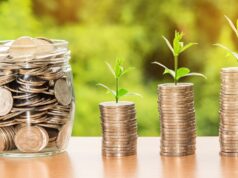
Student loan debt has become a significant burden for millions of Americans, hindering their financial stability and impeding their ability to achieve their dreams. Recognizing the gravity of this issue, President Joe Biden has proposed a student loan forgiveness plan to alleviate the burden on borrowers. In this article, we will delve into the details of Biden’s student loan forgiveness plan and explore its potential impact on individuals and the economy as a whole.
What is Biden’s Student Loan Forgiveness Plan?
Biden’s student loan forgiveness plan aims to address the growing student debt crisis by implementing various measures to provide relief to borrowers. The plan primarily focuses on three key areas:
- Income-Driven Repayment (IDR) Plan Reform: Under this reform, the income-driven repayment plans would be simplified and made more generous. Borrowers’ monthly payments would be capped at 5% of their discretionary income, and after 20 years of consistent payments, any remaining debt would be forgiven.
- Public Service Loan Forgiveness (PSLF) Expansion: The PSLF program would be expanded to include more professions and provide faster forgiveness. Public servants, such as teachers, nurses, and first responders, would be eligible for loan forgiveness after five years of service.
- Undergraduate Debt Forgiveness: The plan proposes $10,000 in undergraduate student loan forgiveness for borrowers who earn up to $125,000 per year. This relief would be available to both public and private college graduates.
Who Will Benefit from the Plan?
Biden’s student loan forgiveness plan aims to provide relief to a wide range of borrowers. The income-driven repayment plan reform would benefit those struggling with high monthly payments by reducing their financial burden and providing a clearer path to debt freedom. The expansion of the PSLF program would incentivize more individuals to pursue careers in public service, knowing that their loan forgiveness would be expedited.
The undergraduate debt forgiveness component of the plan would benefit recent graduates who are starting their careers with significant student loan debt. By alleviating a portion of their debt, they would have more financial freedom to invest in their future, such as buying a home or starting a family.
Potential Impact on the Economy
Biden’s student loan forgiveness plan has the potential to have a positive impact on the economy. By reducing the burden of student loan debt, borrowers would have more disposable income, which could stimulate consumer spending. Increased consumer spending, in turn, can boost economic growth and create more job opportunities.
Furthermore, the plan’s emphasis on public service careers could address crucial societal needs. By incentivizing individuals to pursue careers in fields like education, healthcare, and public safety, the plan could help bridge gaps in these sectors and improve overall community well-being.
Challenges and Considerations
While Biden’s student loan forgiveness plan offers hope for borrowers, it also faces certain challenges and considerations. The plan’s implementation would require significant financial resources, and its success would depend on the cooperation of Congress. Additionally, critics argue that widespread loan forgiveness may discourage personal responsibility and create moral hazards.
It is important to note that the plan’s benefits would not be immediate. The proposed reforms would take time to implement, and borrowers would need to meet specific criteria to qualify for loan forgiveness.
In Conclusion
Biden’s student loan forgiveness plan represents a significant step towards addressing the student debt crisis in the United States. By implementing reforms to income-driven repayment plans, expanding the PSLF program, and offering undergraduate debt forgiveness, the plan aims to provide relief to borrowers and stimulate economic growth. While challenges and considerations exist, the plan offers hope for millions of Americans burdened by student loan debt. As the proposal progresses, it will be crucial to monitor its impact and ensure that it provides meaningful relief to those who need it the most.











